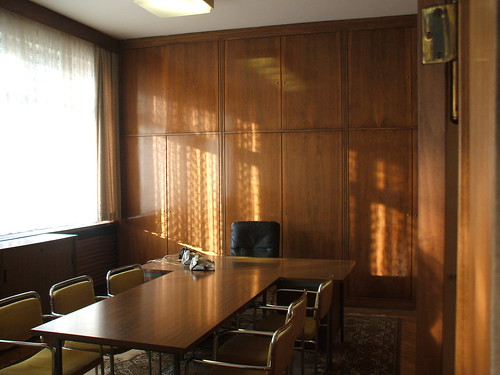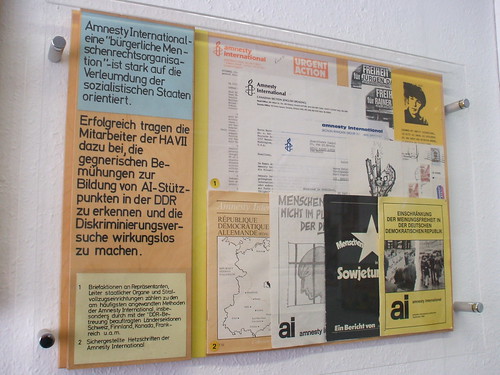OK, so it's time for another chapter of the
Strategic Defence Review as a Blog.
Chapter 2 begins as follows:
The use of force as an option is becoming more complicated. It is likely to become more difficult to use force in the way in which we have used it in the last two decades.
This is of course code for Iraq. The Iraq experience is a considerable theme through the chapter.
Many of our assumptions about joint working and expeditionary capabilities have been validated. But experience has shown that our operations have developed in more complex ways than we envisaged. We have sometimes underestimated the intricacy of working in multi-national operations and with non-military actors
To put it another way: We were right to expect we wouldn't spend all our time in Germany. Further, we had to talk to the RAF. But one particular operation turned out to be much more complicated and much more serious than we allowed ourselves to imagine.
Looking ahead, The Future Character of Conflict will grow more complex. We are likely to face a range of simultaneous threats and adversaries in challenging operating areas – such as fighting in urban areas against enemies concealed amongst civilians. We are also likely to be subject to greater scrutiny from the media and public, both in the UK and overseas. Communications is now a key component of any campaign.
That seems to be communications as in "strategic communications" - PR, in other words. Nothing to do with being Better Off With Map And Nokia. Snark aside, again, this is the experience of Iraq glaring through.
Technological development, especially in the fields of cyberspace and space, may further change our understanding of conflict. It is likely to be more difficult to maintain our technological edge over some adversaries, or to bring that edge to bear on others, with a profound effect on the way we operate.
Anything electronic is now cheap, and the big power monopoly of satellite reconnaissance is breaking down.
There follows a list of operations and arguments that tend to support the 1998 SDR and the later New Chapter. They do not include Iraq, and only mention Afghanistan in passing on the grounds that we got there logistically, until we get to this paragraph:
Special Forces have demonstrated their value across a broad spectrum of activity, from operating alongside our conventional forces in Iraq and Afghanistan to capacity-building with partners or hostage rescue.
However, when we get on to the "lessons learned", we get this:
Our assumption that we could “go first, go fast and go home” has proved false. We believed that we could deploy our forces for the most difficult early intervention stage of a conflict, and leave the subsequent stabilisation and development tasks to partners. But we have not been able – or wished – to disengage as we had planned. We have therefore further improved our ability to sustain deployed forces, including, for example, through additional procurement of strategic lift.
I think this is important. Going first, going fast, and going home was very close to the early Rumsfeld view - airpower, strategic mobility, force protection, and an almost neurotic self-assertion towards allies. It's rather what the
European Council on Foreign Relations says here; Europe was meant to do the boring stuff. It reminds me of the old line about "America cooks and Europe washes up". Well, if you never wash up, eventually you get typhoid. The reference to additional lift was the decision to lease, at vast cost, and eventually buy the RAF some C-17 transports - a sort of shadow of the concurrent procurement train crash around the Future Strategic Transport Aircraft.
The international and national policy and legal framework is having an increasing impact on our operations. Defence continues to make an important contribution to tackling terrorism overseas, following the lines set out in the SDR New Chapter in 2002. The role of Defence in working with other departments to tackle the drivers of terrorism, and to build security capacity, is crucial – although the scope for conducting overseas counterterrorism operations is narrower than envisaged in 2002.
Indeed - 2002, and the spirit of 2002, are a long time ago, and:
In many cases, our operations have developed in much more complex and dynamic ways than we envisaged and planned for, and we have not been able to adapt as rapidly as we would have liked.
Indeed.
In particular, in our focus on our geographical area of responsibility, for example in Basra, we may have placed insufficient emphasis on the multi-national operational level. In the later stages of operations in Iraq, the full integration of UK staff into US and coalition headquarters significantly improved the coordination of our contribution. We are taking that lesson forward in Afghanistan.
To put it another way: We thought we could ignore what was going on in Baghdad, Anbar, and Multinational Division South-Centre, and just crack on in Basra without rocking the boat. But it's impossible to divide the problems of war, whether between land, sea, and air or between geographies within the same theatre. When they wanted war elsewhere, we opted out of the big decisions and lost the ability to say no effectively.
Our deployment of formed headquarters and formations for limited periods has not reflected the need for “campaign continuity”. We have now extended the tour lengths for key headquarters personnel and are looking at options that would ensure greater continuity throughout the headquarters. We are clear that we need to go further to produce better campaign continuity.
This was a problem for the Americans in Vietnam and also for the British Army in various counterinsurgencies. It's probably common to all armies involved in a long war that isn't utterly central to their worldview, because it's driven by career structures. To be a general, you must have a general's command, and why would you be a general if not to command? Further, what they usually command is a formation, and formations usually rotate. Ad-hoc geographical or functional commands are against the bureaucratic structures involved - perhaps it's because of this that they are always necessary.
We have found it challenging to identify and rapidly implement lessons in doctrine. This is inherently difficult, but in some areas we have already moved a long way. The Army recently issued a new Counter-Insurgency Doctrine, and we now have a dedicated training facility for counter-insurgency in the UK.
Well, they're right, really.
Often, innovation within the operation has minimised the adverse impact of these weaknesses. In our current operations, we have incorporated those insights into our strategic policy. Our Afghanistan/ Pakistan Strategy, and General McChrystal’s strategy, are based on a clear understanding of the challenges we face, a long-term vision founded on integrated political, development and military action and an overarching regional approach. Our Urgent Operational Requirements (UORs) procedures are delivering the equipment our forces need as the requirements evolve. The Government has approved over £5.5 billion of UORs in Afghanistan since the operation began.
To put it another way - we muddled through, sort of. The reference to UORs corroborates this - part of the reason why the armed forces don't buy all they need through UORs is that they go around much of the procurement process, in order to be urgent. This means, of course, that they may end up paying more, or getting less. On the other hand, the very fact that they needed to raise £5.5 billion worth of them for Afghanistan - that's as much as the carriers - suggests that the normal procurement process is dysfunctional.
What about the future? It's likely to be:
* Contested – access and freedom of manoeuvre – even as we attempt to deploy into the regional theatre – will have to be fought for;
* Congested – we are likely to be unavoidably drawn into urban areas, the littoral and lower airspace;
* Cluttered – we will find it difficult to discriminate between a mass of ambiguous targets – friendly forces, other international actors such as non-governmental organisations or development agencies, media representatives, local civilians and our adversaries;
* Connected – key lines of communication, including critical military infrastructure, maritime chokepoints and computer networks, will be vulnerable to attack and disruption; and
* Constrained – legal and social changes will place additional limits on our actions.
This is true, but hardly original.
This is a good book.
Our preferred way of warfare – concentrating force, bringing technology to bear and seeking rapid defeat of our adversaries – may not be as effective as it has been in the past.
Is that our preferred way of warfare? I think this might need a debate. It sounds a lot like a classic statement of the American way of war, which may be the problem. Of course, nobody wants to disperse force, fail to use technology to best advantage, and seek endless, inconclusive struggle - but if Rupert Smith is right and struggle tends to be endless and inconclusive, and technology less decisive than expected, perhaps this should have some bearing on our preferences.
And here comes the dread word: "cyber".
Cyber Space, in particular, poses serious and complex challenges for UK security and for the Armed Forces’ operations. Our increasing dependence on cyber capabilities creates opportunities but also serious vulnerabilities. Cyber attacks are already an important element of the security environment and are growing in seriousness and frequency. The most sophisticated threat is from established and capable states but cyber eliminates the importance of distance, is low cost and is anonymous in nature, making it an important domain, not just for hostile states, but terrorists, and criminals alike. Cyber space is critical to much of our military effort here and overseas and to our national infrastructure.
Note that the most
sophisticated threat comes from states - not the main or the most serious threat. Of course, if the feared attack involves an electron microscope or a quantum computer, a state is the most likely attacker. But it's in the very nature of information security that the great overwhelming majority of threats come from a huge diversity of tiny actors, and they are just as capable of doing serious damage as anyone else.
Further, defence against these threats tends to be the same - basically, sensible network management. The good news here is that there is no talk of giant firewalls or of "cyberdeterrence" - just of sensible security precautions. Further, the realities of the threat environment are taken seriously. No Dr. Evil plots here, nor cold war fantasies, just a space rather like the sea. The upshot of this is that the UK has far greater interests in keeping the infrastructure up, working, and open to all than it could possibly have in disrupting it. Very like the sea. The
White House appears also to be heading this way, as
Kings of War points out.
The National Security Strategy also set out the increasing challenges we face in Space. The Armed Forces’ dependence on space has grown rapidly over recent years. Access to space-derived information is now critical to our ability to conduct operations. This makes us vulnerable. The development of offensive counter-space capabilities is a particular concern. But, given our reliance on assets we do not control, there is also a risk of loss of access in periods of high demand – such as during large-scale operations or in the event of a sudden reduction in existing capacity. A continued close relationship with the US underpins our access to space capabilities. But we intend to look closely at how we contribute to allied programmes or develop national capabilities.
This is probably the most significant paragraph in the chapter. After 1971, the UK hasn't tried to maintain its own reconnaissance satellite capability, nor has it participated in multilateral projects. It is thought, although as with everything between the UK and the USA, it is not written down in anything subject to ratification, that there is an understanding that the USA would share its overhead imagery with the UK. We know that this was turned down at least once during the Falklands War.
Tellingly, during the Iraq war, European countries fell in three groups.
Those who had their own imagery - France and Germany. They didn't participate at all.
Those who got such a capability after the spring of 2003 - Spain and Italy. They left early.
Those who had nothing at all - everyone else, basically. The outlier is Turkey, which didn't have such a capability (although they did have representatives at the EU Satellite Centre) but didn't get involved. Then, the Turks probably had good human sources in Iraq. They've since ordered a high-resolution photographic satellite from Telespazio of Italy.
Exactly what the US chose to share with us out of the wealth of imagery its national technical means, as they say, produced remains one of the great questions about the UK's involvement in Iraq.
Research and development investment in defence technology in emerging nations has been increasing significantly over the past decade. Some key equipment produced by these countries is already as capable as equivalent equipment produced by the UK and our key allies and partners.
Civil investment in research and development, both nationally and globally, is now much larger than equivalent defence spending. Much of this research is developing technology – for example in communications, materials or biomedical science – which could be used in a military or wider security context. But the Ministry of Defence and our international partners in defence can expect to have less visibility of and expertise in such cutting edge technology than we have had in the past.
Loss of our technological edge in significant areas of military capability would have a profound effect on the way we operate.
This is the
Arduino question; the proliferation of what used to be technology confined to the superpowers, or as
Phil Hunt put it, what happens when a Congolese workshop with a RepRap can make a surface to air missile? Arguably, the key point here is that there is nothing we can do about it except for getting more like that ourselves - which comes back to the procurement economy.
As
Kings of War's David Betz says, this is an argument for general-purpose forces more than anything else. He also quotes the Navy as follows:
* Firstly, what do you want to defend and what are the Standing Commitments for Defence?
* Secondly, we need to have a clear idea about what we as a country would aspire to do on our own.
* Third, where the UK is operating as a coalition member, how do we want to influence our partners?








